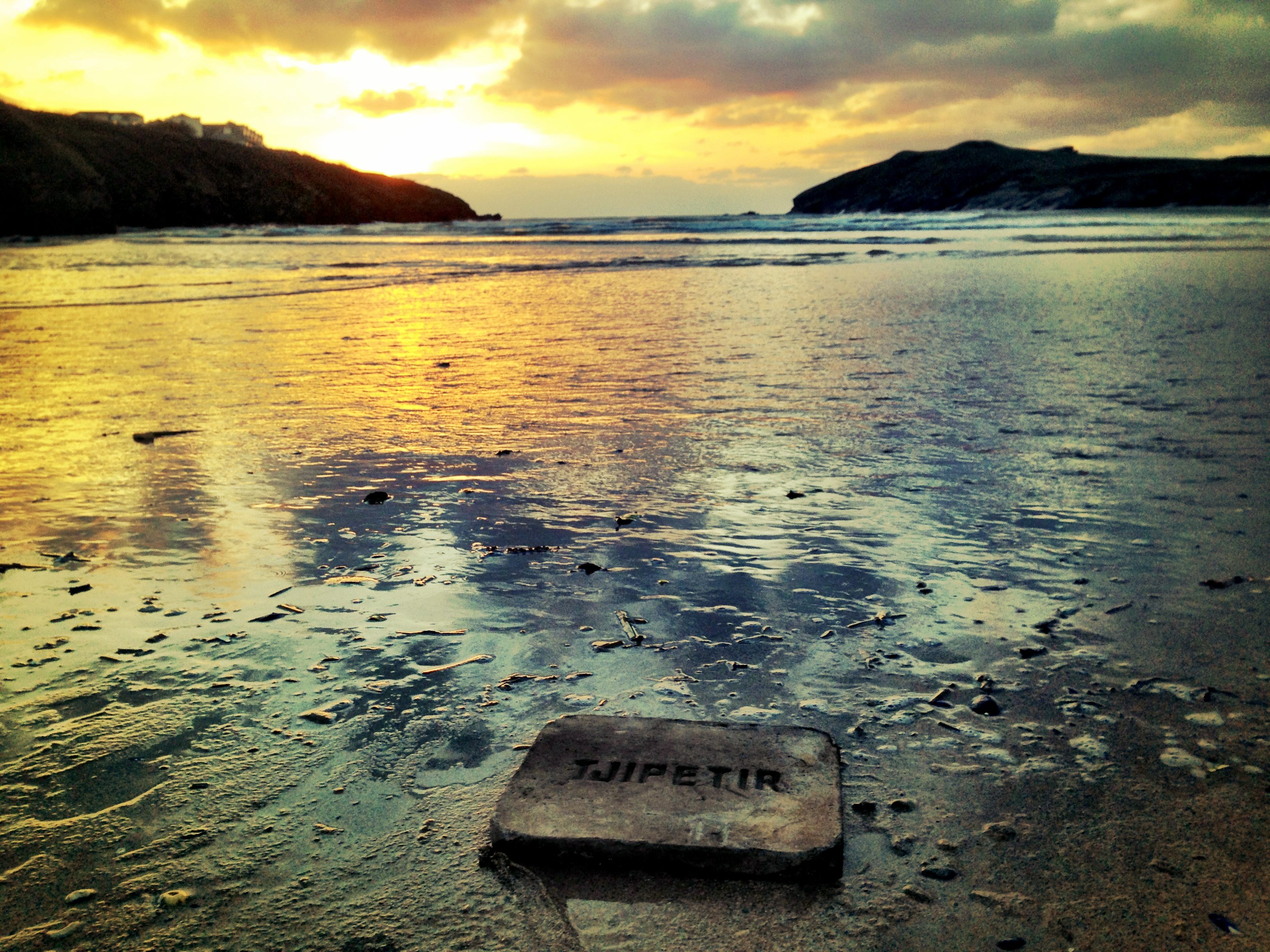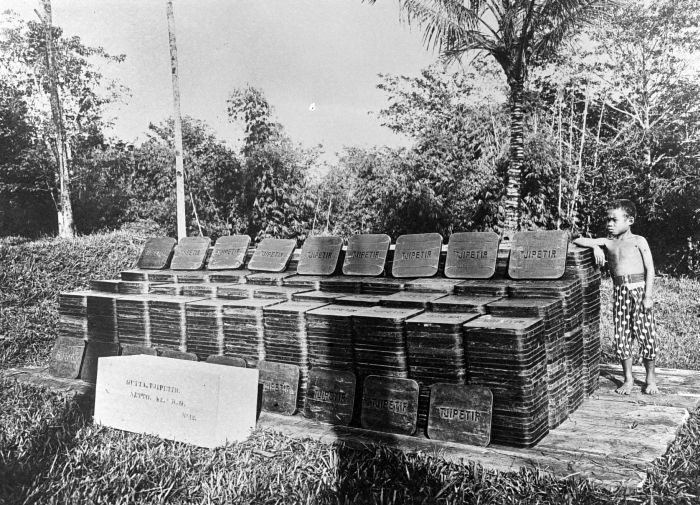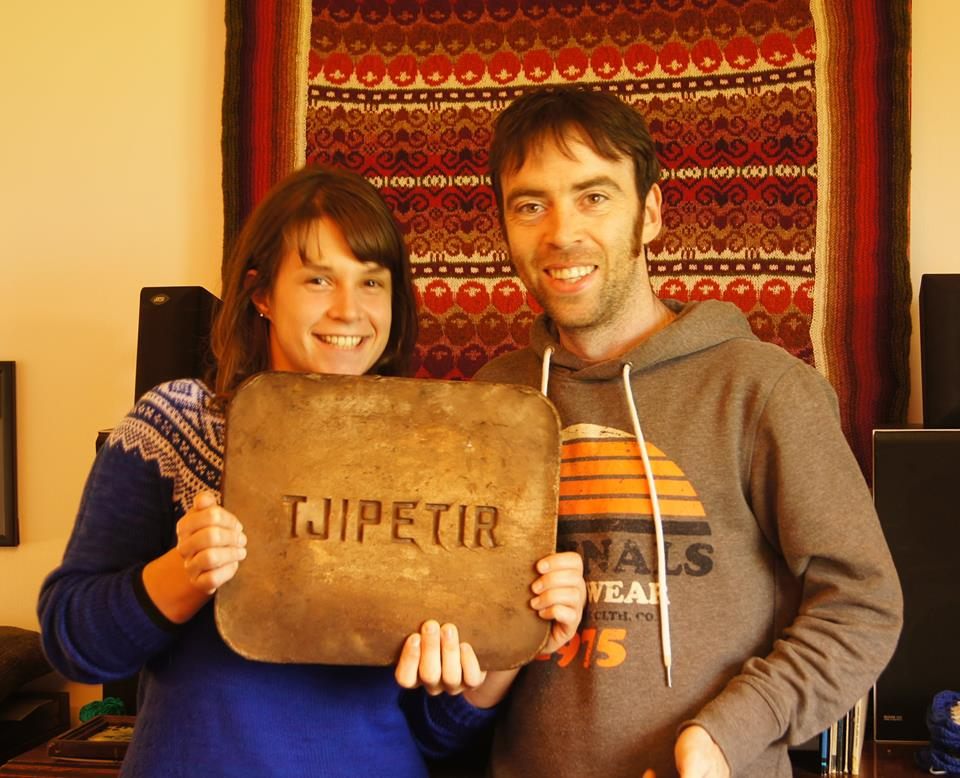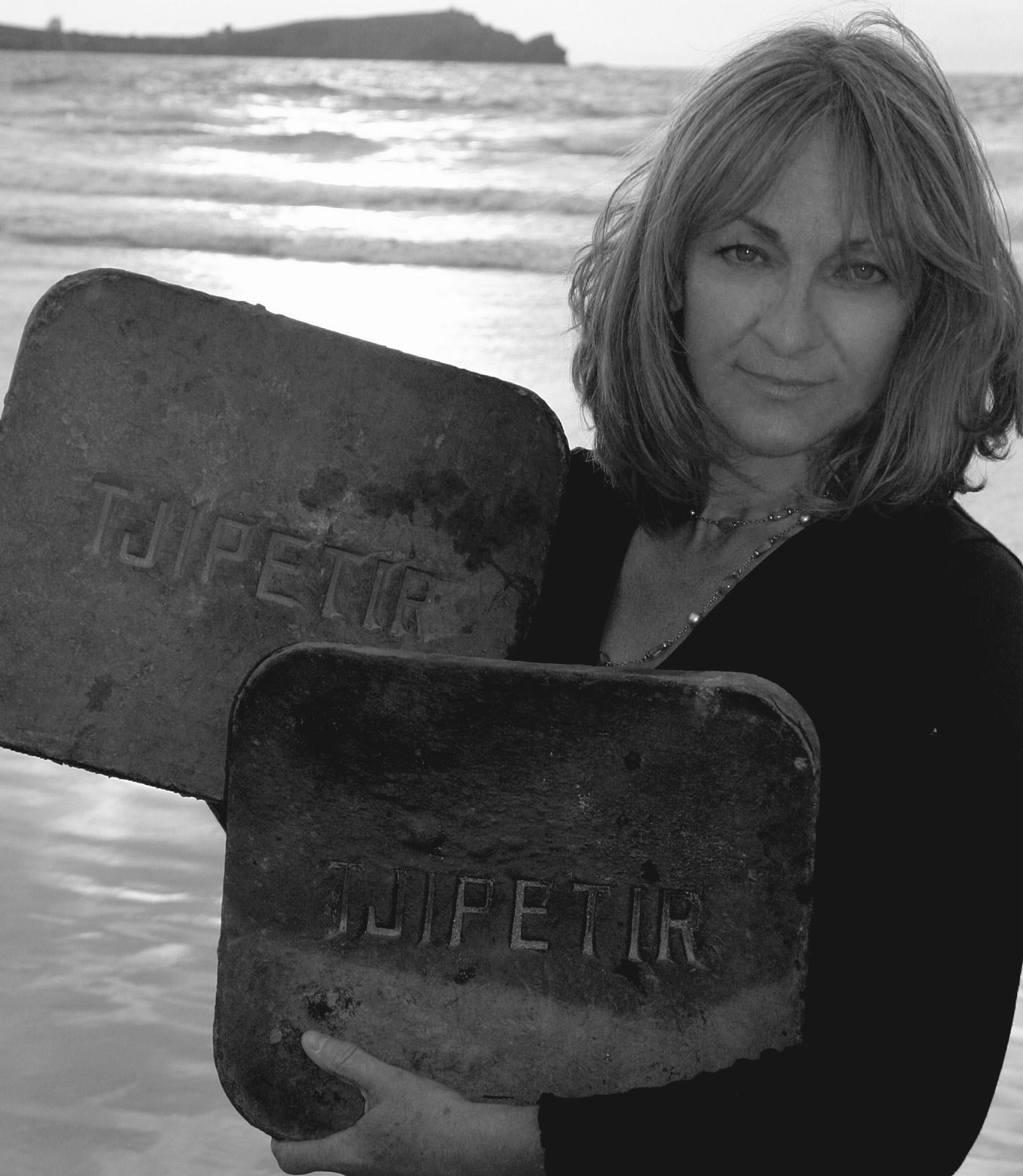Has the Mystery of the Tjipetir Blocks Been Solved?
 (photo by Tom Quinn Williams, via the Tjipetir Mystery Facebook)
(photo by Tom Quinn Williams, via the Tjipetir Mystery Facebook)
In 2012, Tracey Williams discovered her first Tjipetir block during a beachside stroll in Cornwall, England. “I’ve always been fascinated by chance finds and the stories behind them,” she told Atlas Obscura in an email. She took it home and googled “Tjipetir,” but found little information and chalked up the big rubbery square as merely a curiosity. But a few weeks later she found another similar block on a different beach. “Finding one was interesting, but finding two was rather odd,” she said. And she began researching in earnest.
 Late-19th-century Indonesian gutta-percha plantation (photo via Tropenmuseum / Wikimedia)
Late-19th-century Indonesian gutta-percha plantation (photo via Tropenmuseum / Wikimedia)
It turns out that Tjipetir is a village in Indonesia, as well as the site of a 19th-century plantation for gutta-percha, a rubber-like substance made from tree sap. Gutta-percha had many uses, from hot air balloons to fire hoses, but was most commonly for insulating underwater telegraph cables. It was clear to Tracey that the blocks must be coming ashore from a shipwreck, and that there must be many more. So she set up a Facebook page to see if anyone else had similar finds to report. Soon submissions were coming in from all around the British Isles, as well as France, Denmark, Spain, and the Shetland Islands.
 Adam Adamson and Marina with a block they found on the Shetland Isles, photo by Adam Adamson (via the Tjipetir Mystery Facebook)
Adam Adamson and Marina with a block they found on the Shetland Isles, photo by Adam Adamson (via the Tjipetir Mystery Facebook)
A strong community developed on the Facebook page, with people sharing stories and trading theories about the origin of the blocks. Tracey spoke with wreck divers, oceanographers, historians, and journalists, and interest in the story grew. As Oceanographer Curtis Ebbesmeyer told the BBC in its story on the mystery last month, it takes flotsam about 25 years to go around the world, so determining the source of the blocks, which may have been afloat for more than a century and gone around the world several times, seemed quite difficult. For some time a popular theory was that the blocks actually came from the Titanic, which had gutta-percha tablets listed on its cargo manifest.
 Friederike Wegert and her children with a block they found at Borkum, photo by Friederike Wegert (via the Tjipetir Mystery Facebook)
Friederike Wegert and her children with a block they found at Borkum, photo by Friederike Wegert (via the Tjipetir Mystery Facebook)
“It was like a big jigsaw with lots of pieces missing,” Tracey explained. But then in late 2013, there was a breakthrough. “Several people started throwing me clues — people who seemed to be in the know. Two different people from two different countries independently sent me information naming the same ship.” That was the Miyazaki Maru, a Japanese passenger ship that was sunk by a German submarine while on its way to London in 1917. It seemed that a salvage operation was under way on the wreck, which may have released a large number of blocks into the ocean, accounting for the sudden uptick in their appearance on beaches.
Tracey wasn’t the only one who now thought the Miyazaki Maru could be the source of the blocks. The British government’s Receiver of Wreck (also called the Coroner of the Seas) was also looking to that ship, and called it the “favored possibility” as the source of the blocks. The ship’s location fits the drift pattern the blocks’ recovery indicates, and it was carrying hundreds, if not thousands, of gutta-percha planks. Mystery solved — perhaps.
 Tracey Williams, photo by Tom Quinn Williams (via the Tjipetir Mystery Facebook)
Tracey Williams, photo by Tom Quinn Williams (via the Tjipetir Mystery Facebook)
“There are many questions still to be answered,” Tracey stated. “For me, the story is only just beginning.” She is interested in learning more about the Miyazaki Maru and the people who died aboard it, and she also thinks there’s a good chance that the blocks originated on more than one ship. She’s currently at work on a book about the Tjipetir mystery. “I think people love mysteries of the sea,” Tracey added. “This story has connected beachcombers and communities across the world. It’s a story about war, shipwrecks, and salvage, and is helping oceanographers who study the patterns of the tides.” Tracey is certainly no stranger to sea mysteries — she also runs the Facebook page Lego Lost At Sea, seeking to track the toys that have come ashore since 62 containers washed overboard from the Tokio Express in 1997.
Because the oceans are vast and so seemingly unknowable, beaches where strange things wash ashore are a great source of fascination for many. This particular mystery may be solved (or it may not), but surely more wonders are waiting in the watery depths to captivate our attention onshore.










Follow us on Twitter to get the latest on the world's hidden wonders.
Like us on Facebook to get the latest on the world's hidden wonders.
Follow us on Twitter Like us on Facebook